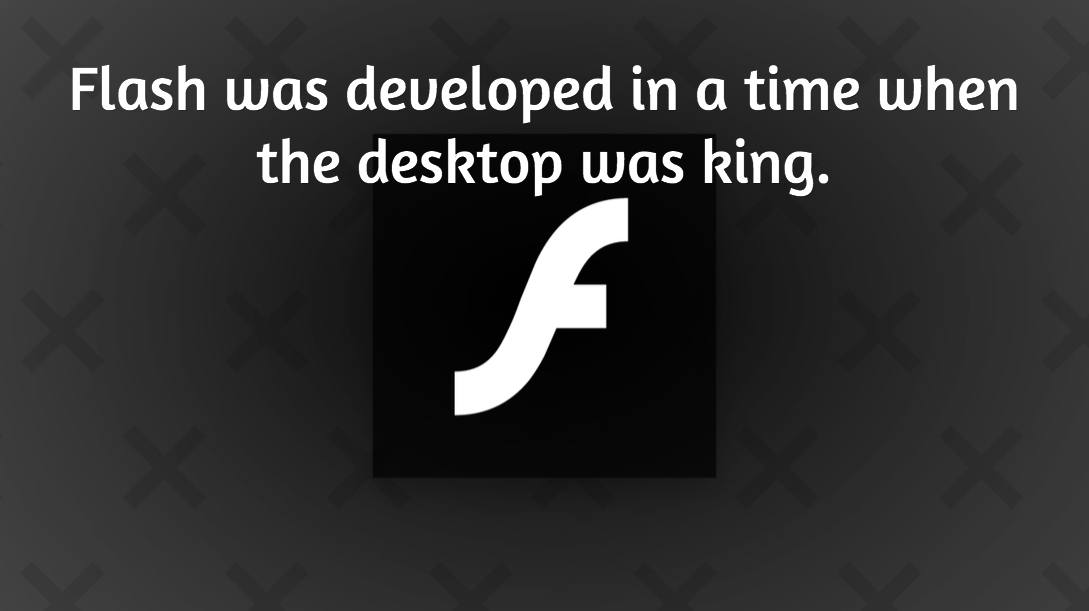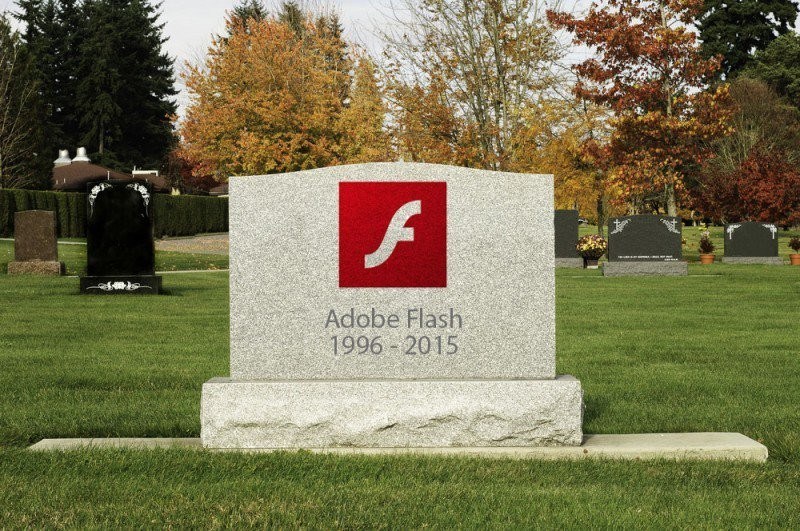Why It’s Time We Mourn The Demise Of Flash In eLearning
It’s been five years since Steve Jobs wrote Thoughts on Flash, an open letter setting out the reasons why Apple would not be supporting Adobe Flash technology in their products. The most critical of those products would be the iPad, which was blazing the trail in tablet technology.

Since the publication of Steve’s letter, even Adobe has abandoned mobile development for Flash, and it seems the end is now finally nigh for Flash, with TechCrunch posting their Farewell to Flash article. The article sets out what a Flash-free world will mean for us all.
What’s Up With Flash?
Way back, when I worked with a well-known agency on the South Coast of England, our insightful CEO fought hard against the advent of Flash into the industry, citing security and accessibility issues. At my last company, a blue chip Business Process Outsourcing (BPO), we had fierce debates about whether to make the switch to HTML5 despite our clients’ lack of enthusiasm for the new technology, and we had to convince a few clients that we could be more agile in our eLearning development if we made the shift early.
In reality, we in the eLearning industry have always worked with HTML, given the problems of deploying in Flash:
- Clunky - long load times, doesn’t render text clearly.
- Doesn’t satisfy accessibility criteria.
- Requires a plug-in (possibly the biggest headache in sectors where learners do not administrate their work PCs).
- Shackles learners to desktops when mobile is more expedient (think anytime, anywhere learning).
- Hinders agile project management due to time-consuming bug fixes, updates, and maintenance.

Why Do We Like HTML5?
The eLearning industry has been waiting for tools that would allow us to build in HTML with all the interactions we liked in Flash. With HTML5 and JavaScript now maturing, pretty much anything we once did with Flash is achievable using these media. What’s more, the results are often better and are generally slicker than they were with Flash. HTML5 is conducive to the direction eLearning and content consumption are heading, and it will positively affect learners’ experiences. It also requires less bandwidth than Flash to run, making it much more efficient for the battery life of learners’ mobile devices. The switch to HTML5 also helps decrease development time.
How You Can Prepare For A Flash-Free World
Here are a few guidelines to help you prepare for the demise of Flash:
- Consider adopting eLearning development tools that allow you to build and deploy easily in HTML5, rather than forcing you to convert. Tools such as the cloud-based Elucidat are built on HTML5 technology to let you focus on creating beautiful, interactive user experiences for learners on mobile as well as desktop devices (something Flash could never support).
- If speed is your priority, look out for tools that provide pre-built themes and screen types, which have already been coded by professionals and adhere to the very latest industry and design standards and best practices.
- If your learning makes use of video, you avoid Flash, the limitations of which include high levels of energy consumption (not good on mobile devices) and potential security risks.
Conclusion: A Few Points To Keep In Mind
In this article, we’ve broadly described why the advent of HTML5 in eLearning is to be applauded. However, there are one or two points to bear in mind when deploying eLearning in HTML5:
- HTML5 is not supported by some legacy browsers. I know it’s hard to imagine, but for reasons that can be quite complex, some organizations may still be using older browsers in which HTM5 won’t run. The final demise of XP and -along with it- IE6 has fast tracked many of the organizations still clinging to their old browsers. But, it’s worth doing a quick tech spec of your environment into so you can ensure compatibility with HTML5 eLearning products.
- If 100% of eLearning in your company takes place on desktop machines, and your existing toolset is Flash-based, it may not be worth your while to switch right now. HTML5 comes into its own on mobile devices, where it uses less energy resources and is supported across all platforms.
Whatever your conclusion happens to be; it does seem inevitable that Flash will soon be confined to the annals of history. So, you may want to start thinking beyond its funeral and start considering your insurance package for the future of eLearning development.
Stay on top of the latest eLearning ideas, trends, and technologies by subscribing to the Elucidat weekly newsletter.







